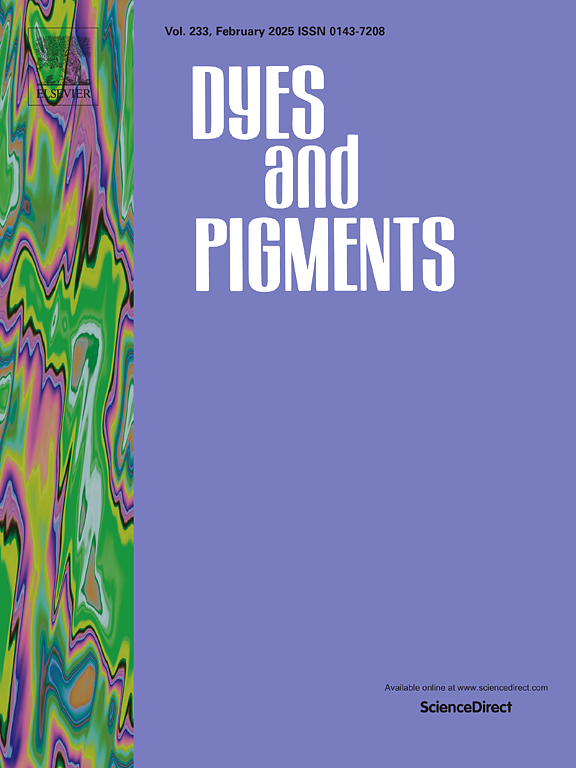Optimization of thieno[2,3-b]thiophene derivatives for air-stable organic field-effect transistors
IF 4.1
3区 工程技术
Q2 CHEMISTRY, APPLIED
引用次数: 0
Abstract
In this research, four novel thieno[2,3-b]thiophene (TT) derivatives incorporating triple bonds were developed and investigated as active layers for organic field-effect transistors (OFETs). The compounds were investigated through thermogravimetric analysis (TGA), differential scanning calorimetry (DSC), UV–visible spectroscopy (UV–vis), and cyclic voltammetry (CV) to assess thermal, optical, and electrochemical characteristics. All TT-based semiconductor thin films, fabricated using the solution-shearing technique, demonstrated p-channel activity. Notably, both compound 2 ([2,5-bis(phenylethynyl)thieno[2,3-b]thiophene], with a benzene ring linked to the TT core via a triple bond) and compound 4 ([2,5-bis(thiophen-2-ylethynyl)thieno[2,3-b]thiophene], with a thiophene ring similarly connected) demonstrated superior electrical characteristics in ambient with carrier mobility up to ∼ 0.075 cm2/Vs with a current on/off ratio >10⁶. The surface morphology and microstructure of the semiconductor thin films were analyzed through θ-2θ X-ray diffraction (XRD) and atomic force microscopy (AFM). The results revealed that the absence of steric hindrance caused by methyl groups contributed to higher crystallinity and improved film texture, which correlated with enhanced device performance. Furthermore, the devices maintained consistent performance even after 90 days of storage, demonstrating superior air stability.

求助全文
约1分钟内获得全文
求助全文
来源期刊

Dyes and Pigments
工程技术-材料科学:纺织
CiteScore
8.20
自引率
13.30%
发文量
933
审稿时长
33 days
期刊介绍:
Dyes and Pigments covers the scientific and technical aspects of the chemistry and physics of dyes, pigments and their intermediates. Emphasis is placed on the properties of the colouring matters themselves rather than on their applications or the system in which they may be applied.
Thus the journal accepts research and review papers on the synthesis of dyes, pigments and intermediates, their physical or chemical properties, e.g. spectroscopic, surface, solution or solid state characteristics, the physical aspects of their preparation, e.g. precipitation, nucleation and growth, crystal formation, liquid crystalline characteristics, their photochemical, ecological or biological properties and the relationship between colour and chemical constitution. However, papers are considered which deal with the more fundamental aspects of colourant application and of the interactions of colourants with substrates or media.
The journal will interest a wide variety of workers in a range of disciplines whose work involves dyes, pigments and their intermediates, and provides a platform for investigators with common interests but diverse fields of activity such as cosmetics, reprographics, dye and pigment synthesis, medical research, polymers, etc.
 求助内容:
求助内容: 应助结果提醒方式:
应助结果提醒方式:


